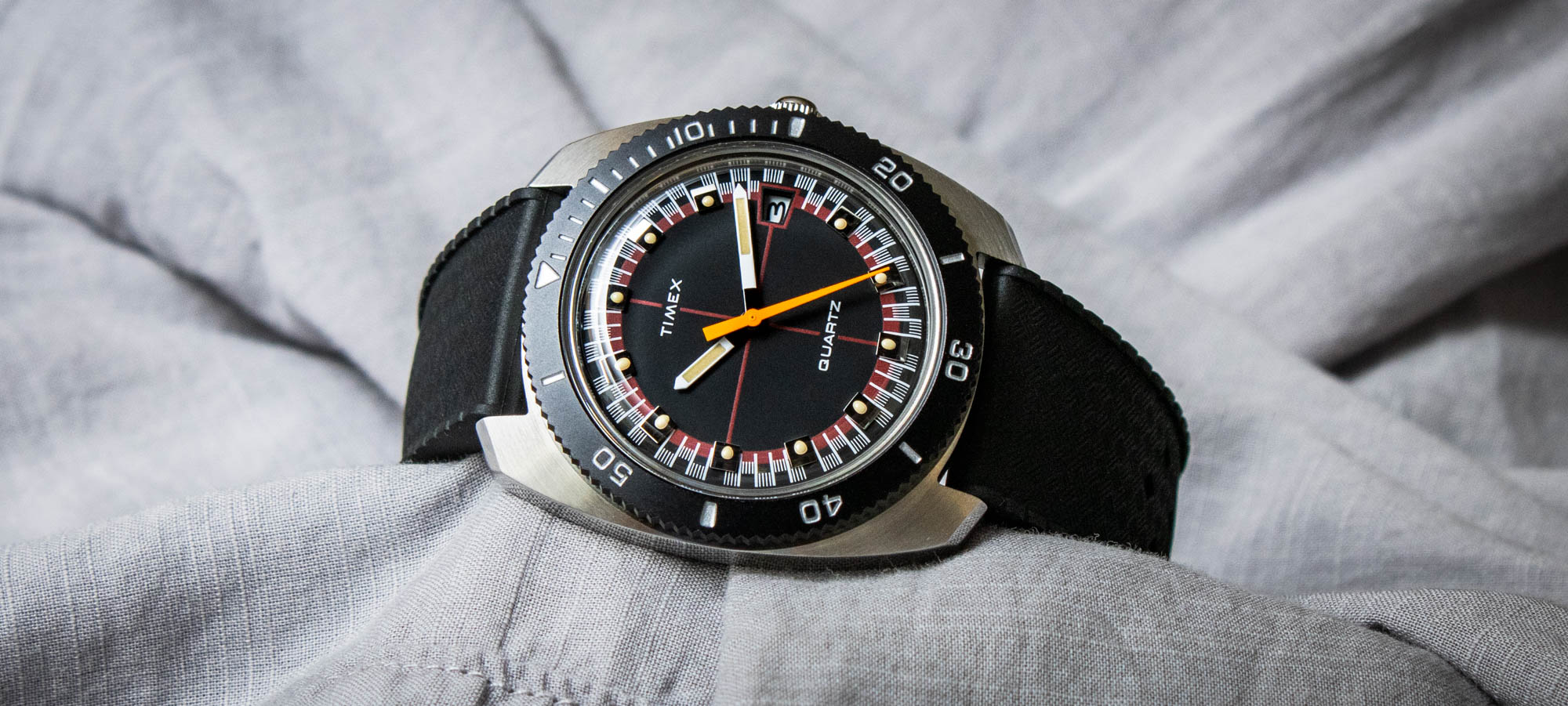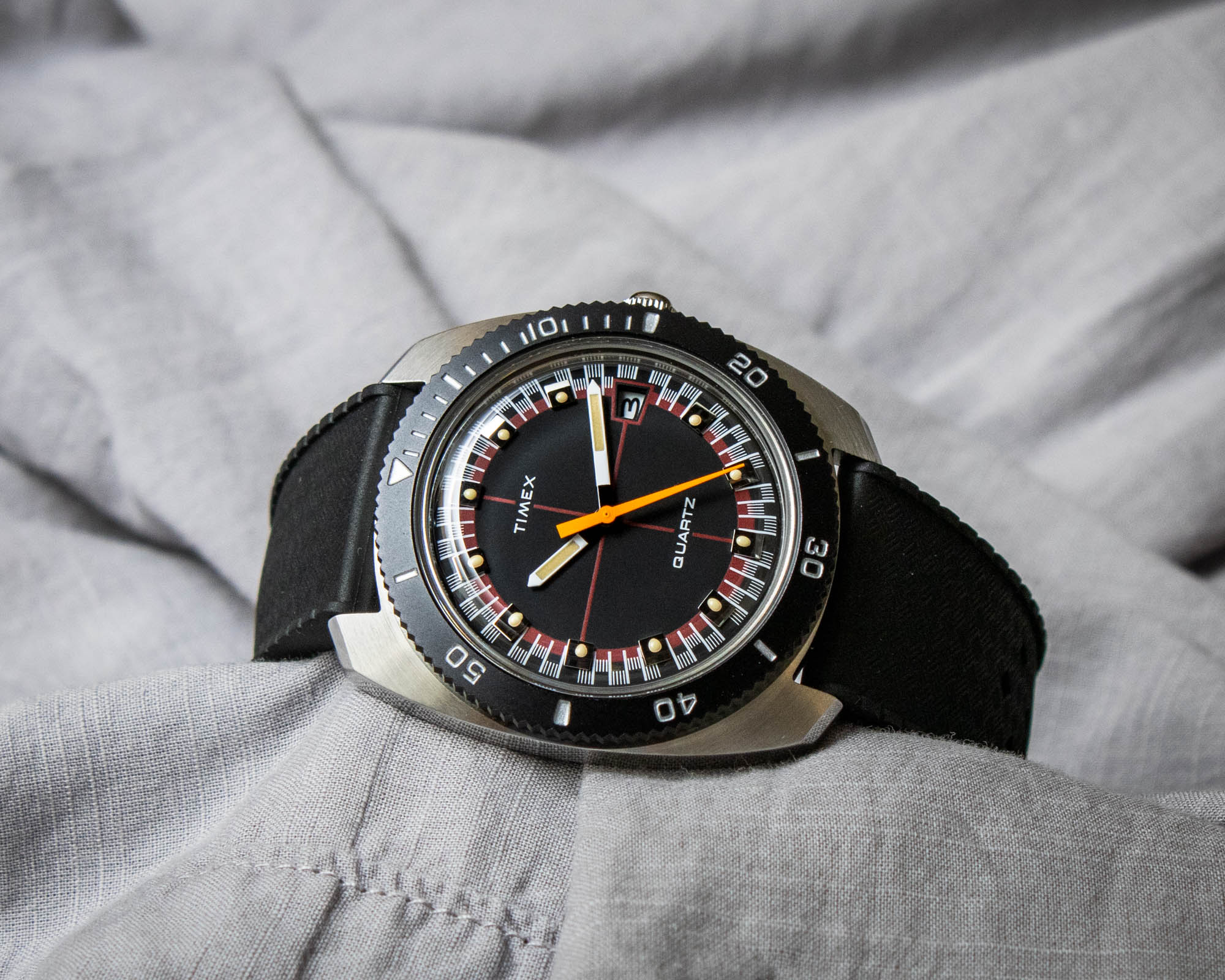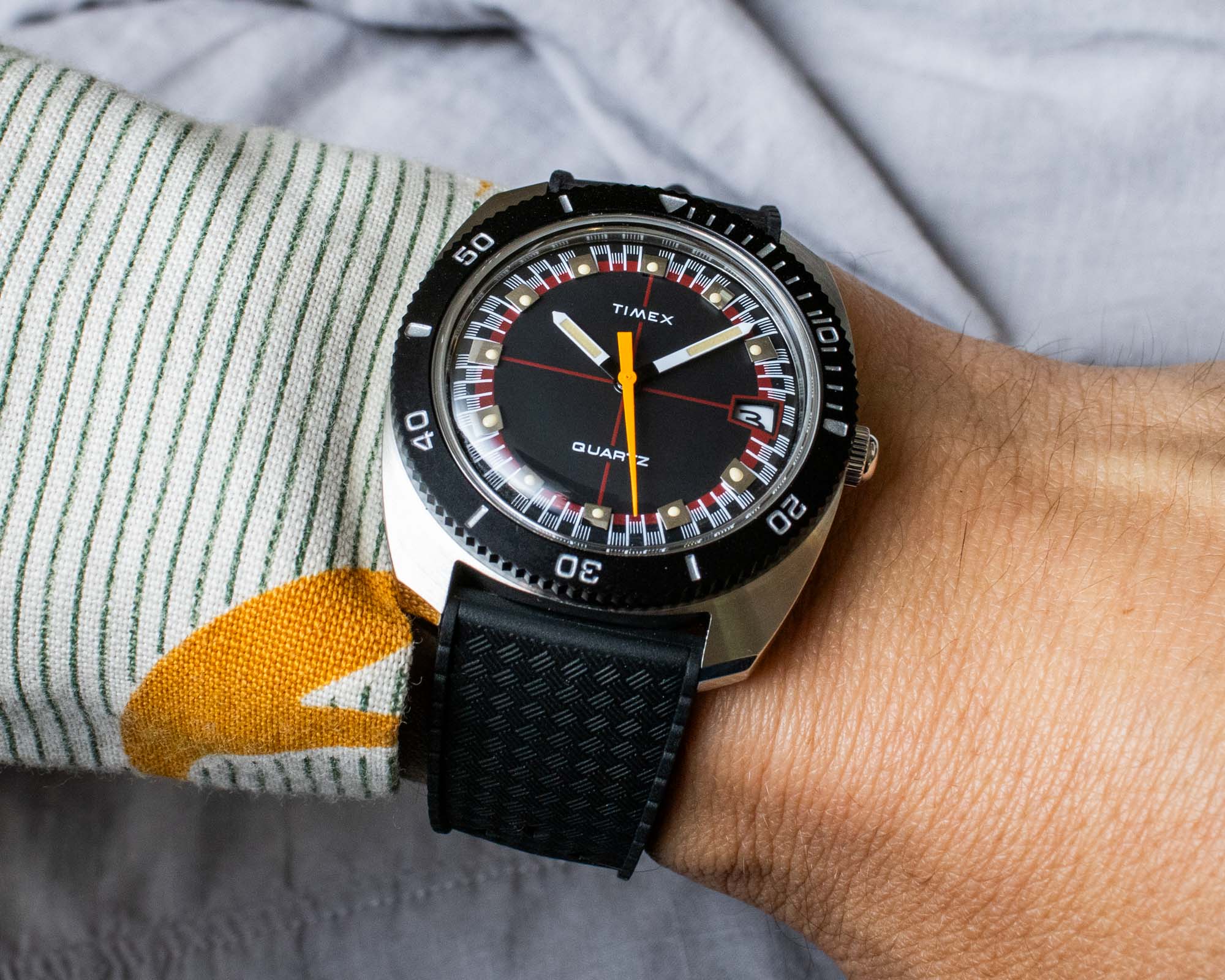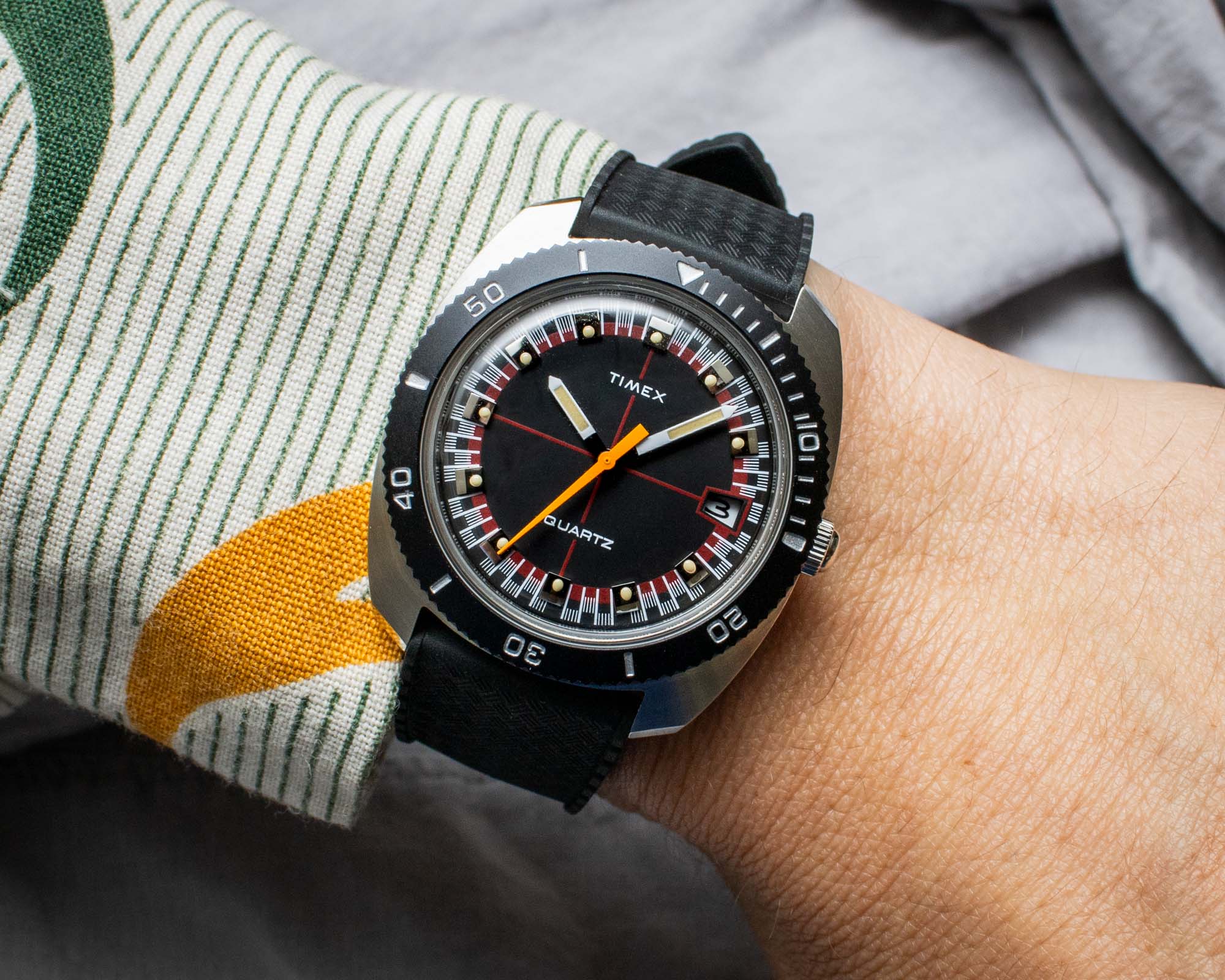
By reviving fan-favorite designs from the brand’s archives, the Q Timex series has quickly established itself as a viable option for those who want an affordable watch with vintage styling that is also entirely free from the worries of actually owning an old timepiece. Offering superior materials and finishing compared to the brand’s entry-level offerings, the Q Timex collection has expanded over the years, and it now offers a fairly wide assortment of vintage-inspired models. Among the more recent additions to the collection for 2024 is the Q Timex Reissue 1971 Velocity, which draws its inspiration from a racing-style electric sports watch that the brand originally produced in the early 1970s.
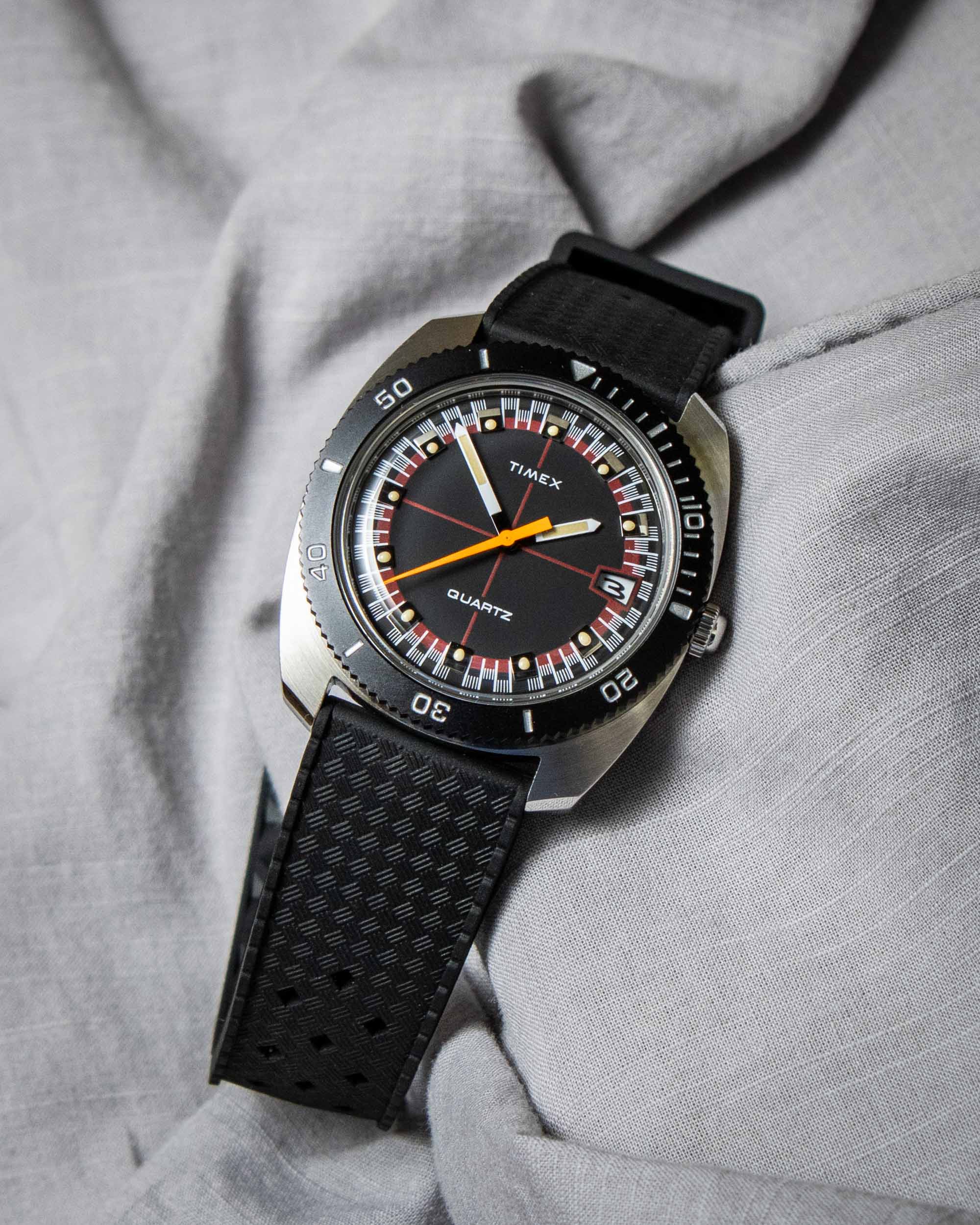
Similar to other models from Timex’s various premium collections, such as the Waterbury, Marlin, and Expedition North, the new Q Timex Reissue 1971 Velocity (ref. TW2W22400) features a proper stainless steel case, rather than the plated brass or plastic cases that are characteristic of Timex’s entry-level offerings. The cushion-shaped middle case is largely high-polished with circular brushing on its top surfaces, while the brushed stainless steel caseback is secured by four small screws and includes a user-accessible battery hatch that can be opened with any flathead screwdriver or even the edge of a coin.
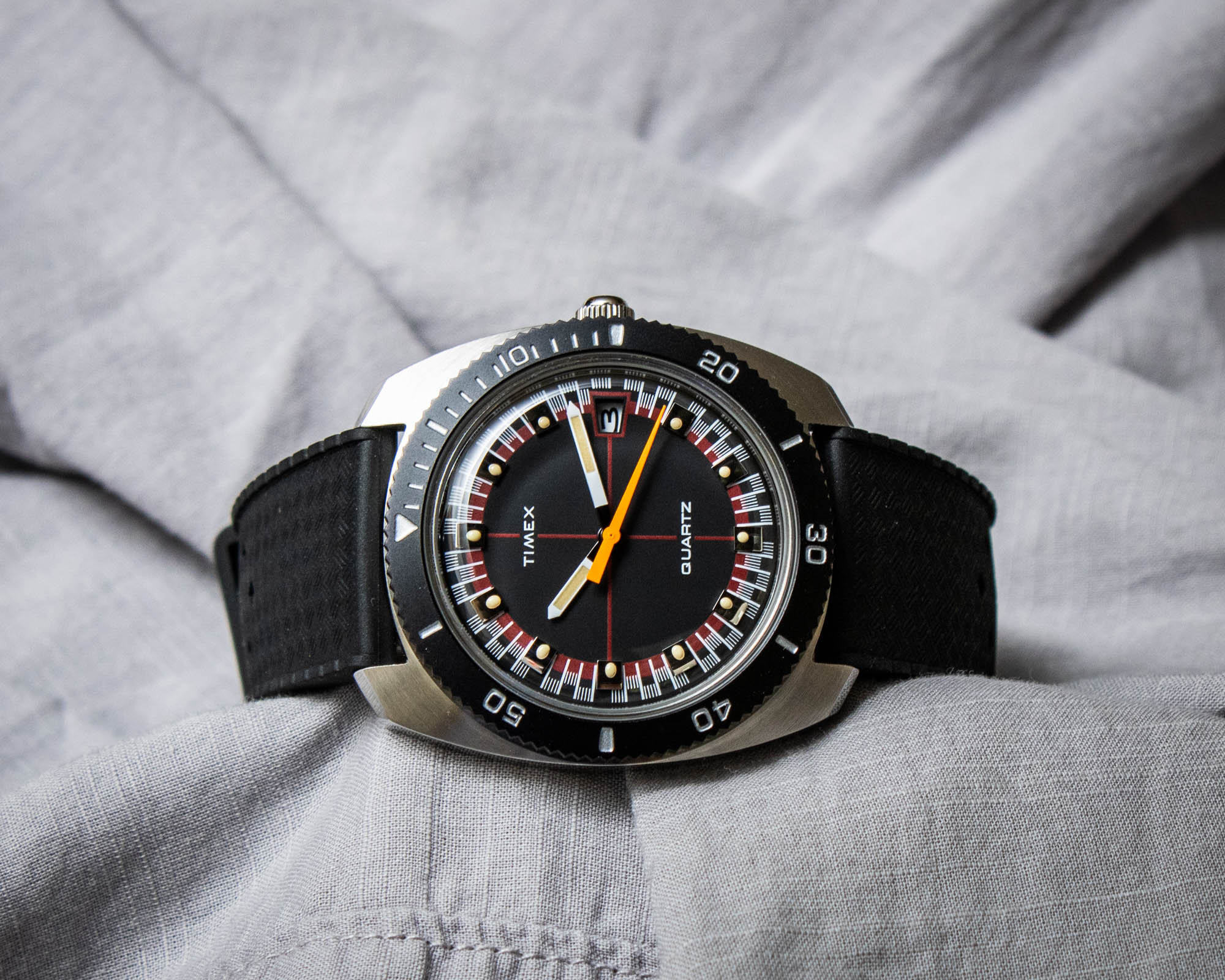
Meanwhile, the top of the Q Timex Reissue 1971 Velocity’s case receives a vintage-style domed acrylic crystal, along with a friction-fit bidirectional bezel that is made from black-finished aluminum with a white elapsed timing scale. Despite its sporty intentions and dive watch styling, the unsigned crown at 3 o’clock is of the standard push/pull variety, and water resistance comes in at a fairly standard 50 meters to protect against daily contact. Given this moderate depth rating, actual diving applications will certainly be out of the question, although according to Timex’s website, this level of water resistance should still be more than enough to withstand hand-washing and light swimming.
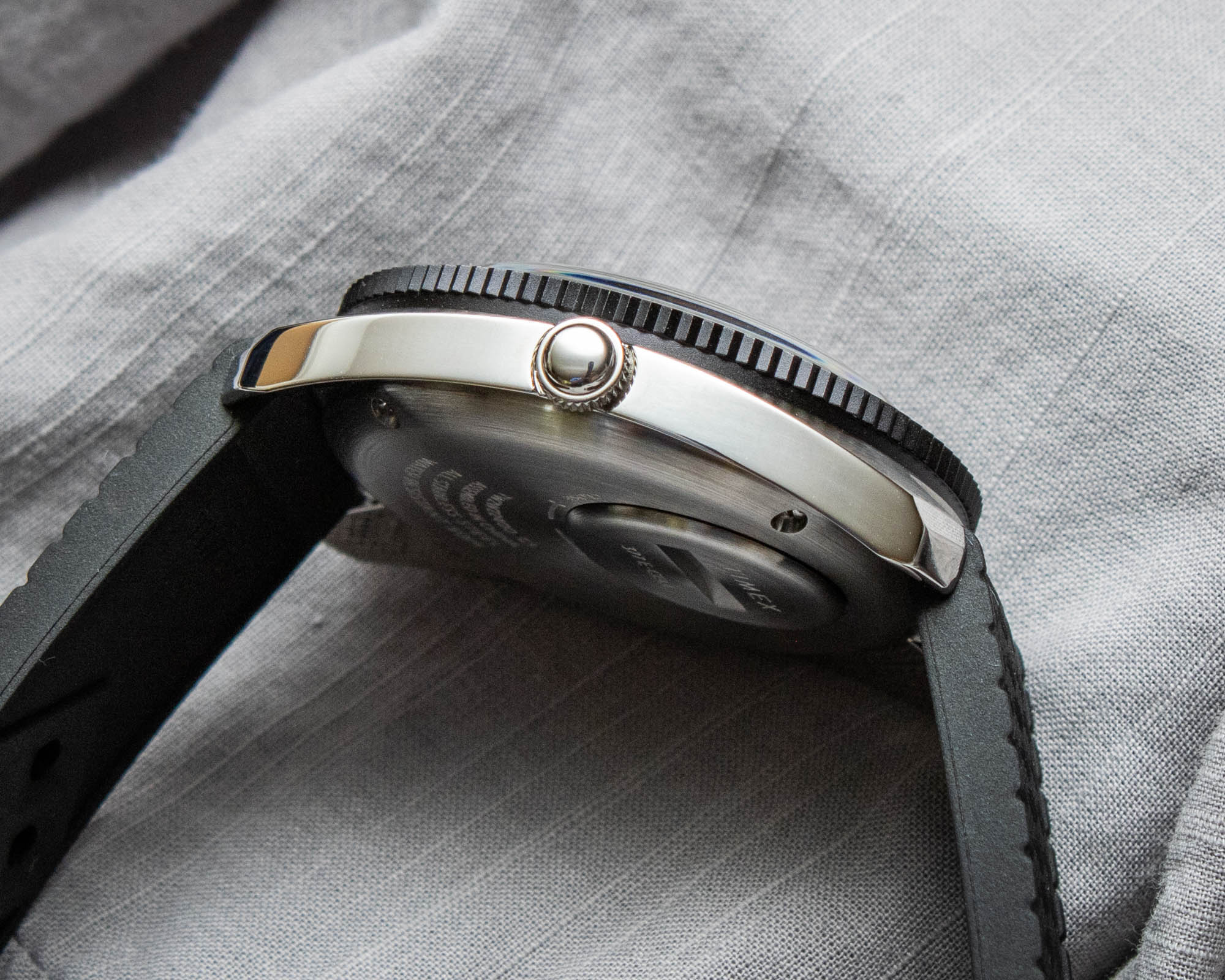
In my opinion, the real standout feature of the Q Timex Reissue 1971 Velocity is its dial, which features an inherently retro appearance with its red crosshair lines running through the center and checkerboard-style minute track. Polished applied hours markers with luminous dots placed upon them are located around the periphery of the dial, and at the 3 o’clock location is a trapezoid-shaped date window that showcases a vintage-themed font on the calendar disc. The trio of centrally-mounted hands further the racing vibe established by the dial, and while the hour and minute hand are both finished white with black centers and luminous strips, the needle-shaped seconds hand is bright orange for added contrast and visibility.
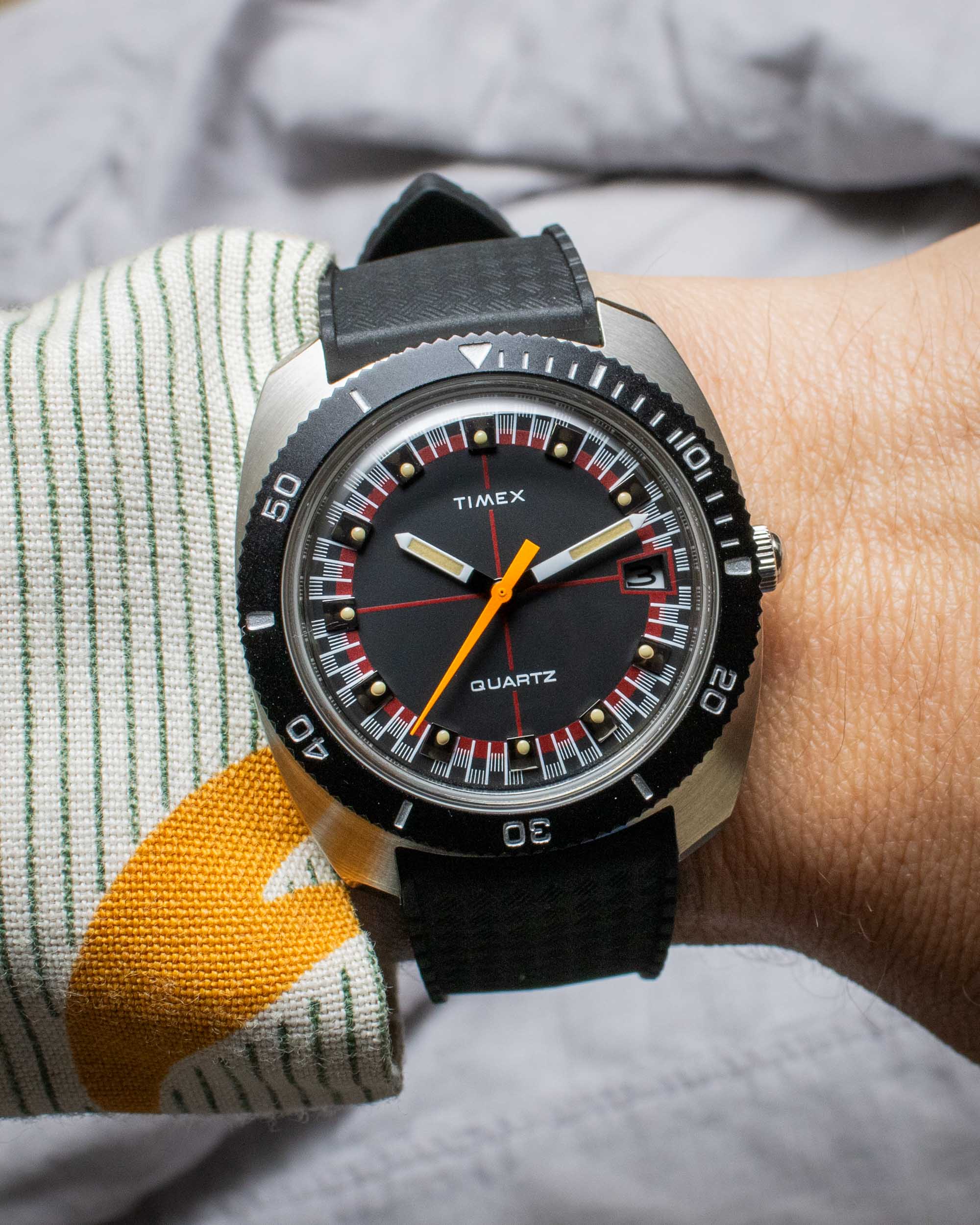
Between the fairly small size of the lume plots and the simple fact that the tinted luminous material itself probably isn’t the top-tier Grade A Super-LumiNova that exists elsewhere within the industry, the hands and hour markers on the Q Timex Reissue 1971 Velocity don’t glow nearly as long or as brightly compared to the chunky lume-filled indexes of a Swiss diver. That said, when it comes to sports watches, lume is more-or-less obligatory, and the luminous material used by Timex is still a welcome addition. The strong contrast provided by the finishing on the hands goes a long way towards promoting low-light visibility, and all of the luminous material that appears on the Q Timex Reissue 1971 Velocity emits a traditional green-colored glow in the dark.
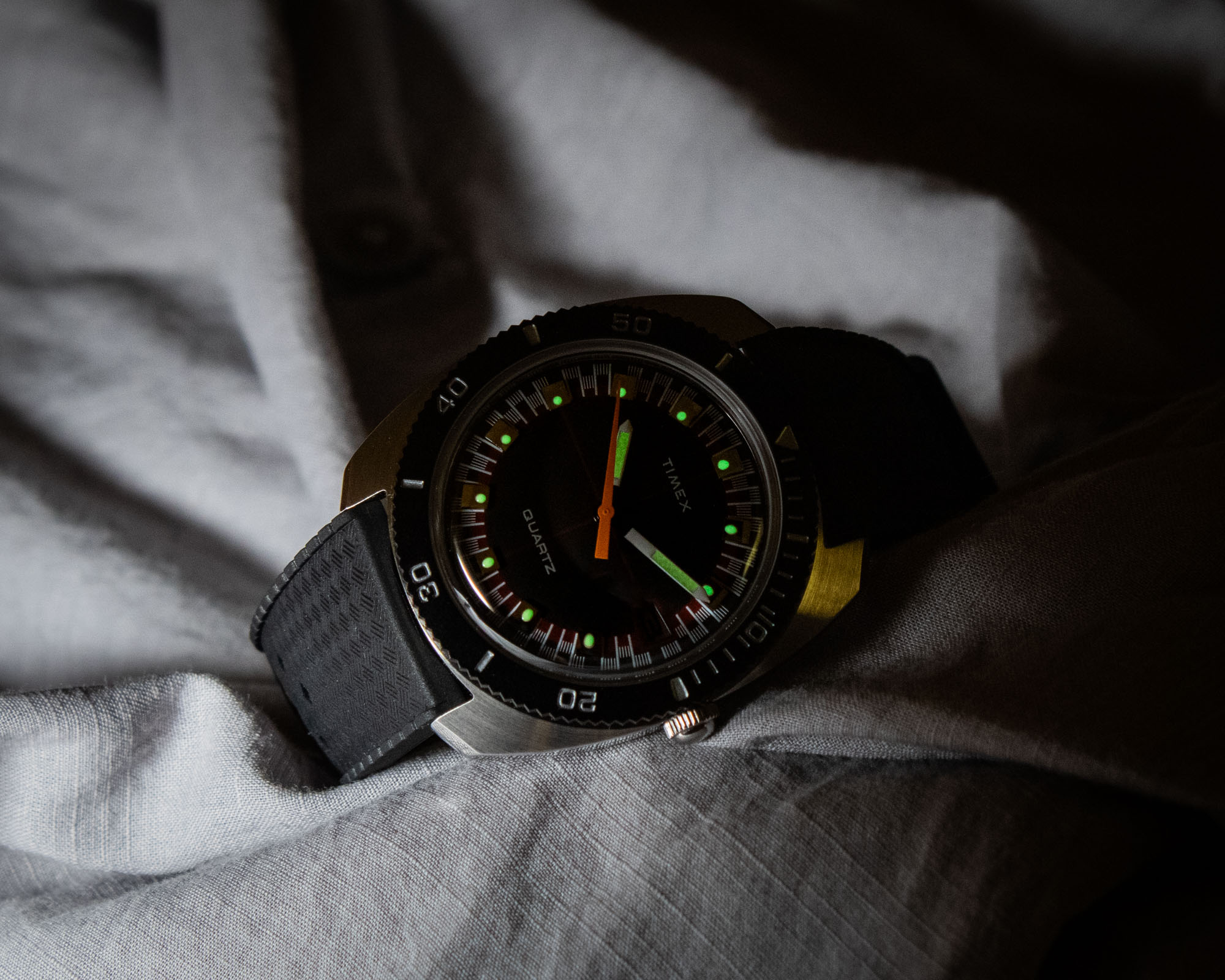
Regarding dimensions, I have no idea where Timex gets the numbers that it lists on its website, and I rarely find that the values are even remotely in the realm of being correct. For the Q Timex Reissue 1971 Velocity, the brand lists a diameter of 36mm with a thickness of 9.5mm. Timex is so committed to that 36mm diameter, that it even lists the model as the “Q Timex Reissue 1971 Velocity 36mm Synthetic Rubber Strap Watch” on its official website; however, even the bezel of the watch has a diameter that is slightly larger than 36mm, and the cushion-shaped profile of the case makes this model wear quite a bit larger than a true 36mm timepiece with a classic round profile.
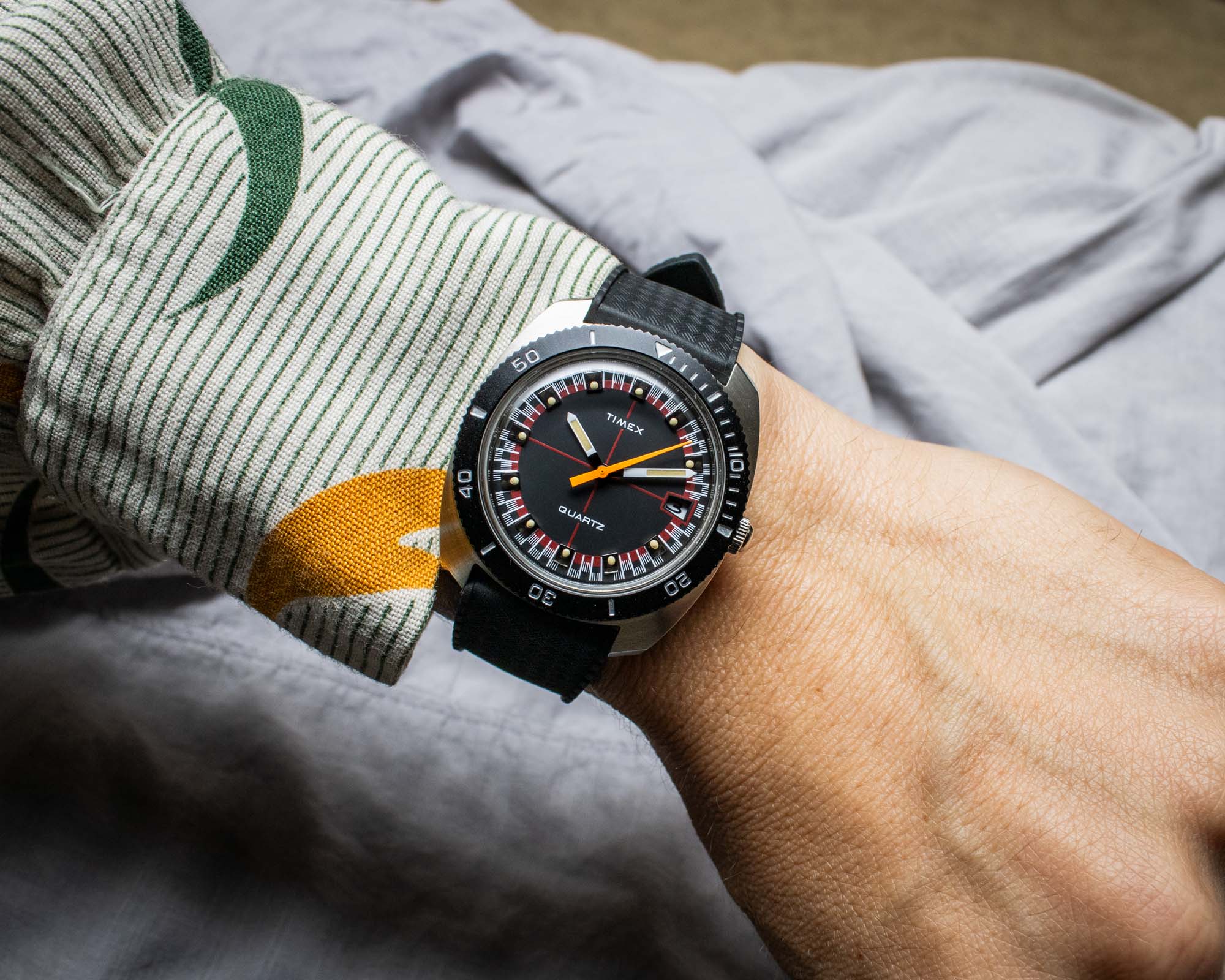
When measured with a set of digital calipers, the case of the Q Timex Reissue 1971 Velocity is 37mm at its narrowest point (from 3 o’clock to 9 o’clock), while the overall thickness comes in at 12.8mm, so I can only assume that Timex doesn’t include the additional height of either the crystal or battery hatch when measuring the thickness of this watch. Timex also doesn’t go into too much detail when it comes to specs (which is probably for the better), but for those who are curious, the lug width is 20mm, the lug-to-lug profile comes in at 42mm, and the weight of the watch is approximately 60.5 grams including its rubber strap.
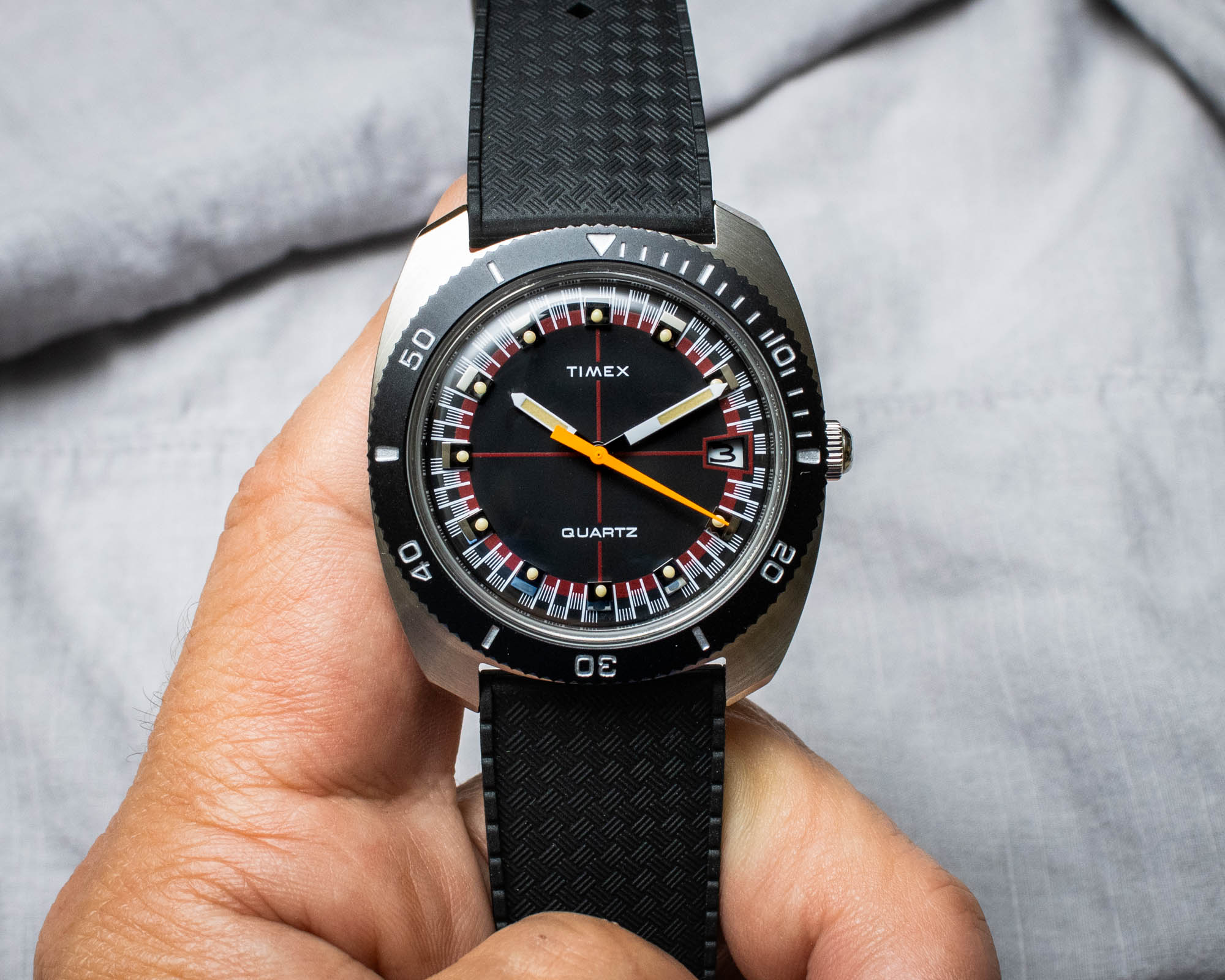
The black tropic-style rubber strap that comes with the Q Timex Reissue 1971 Velocity isn’t all that remarkable, although it’s ultimately a fairly solid option when compared to what you typically find on the brand’s entry-level models. Tapering from 20mm at the case down to 18mm at its signed pin buckle, the strap is quite soft and supple, although due to the relatively compact lug-to-lug profile of the case, the strap ends up feeling slightly short in terms of its overall length, and this can either be a positive or a drawback depending on your wrist size. I find the length of the strap to be close to ideal, although individuals with larger wrists might find that they need to wear it on one of its last few sizing holes.

As is the case with most of its watches, Timex does not mention the specific movement that is used to power the Q Timex Reissue 1971 Velocity, aside from listing it as “quartz” (which is already rather obvious given the prominent “Quartz” branding that appears on its dial). That said, based upon the packaging of the watch and its caseback inscriptions, we know that the movement is of Japanese origin, and that it runs on a single 377 battery. Despite the minimal details, these two facts actually significantly narrow down the possibilities when it comes to what three-handed quartz movement resides under the caseback:

A Japanese quartz movement is generally synonymous with either Miyota or Seiko, and since Miyota typically serves as the go-to movement supplier for Timex, my guess is that the Q Timex Reissue 1971 Velocity is powered by some variation of the quartz Miyota Cal. 2015. This assumption is further supported by the type of battery that the movement requires, as the Seiko Epson version runs on a different power cell. While there will inevitably be some collectors who wish that this model was fitted with a mechanical caliber, the original 1970s watch that serves as its inspiration actually used a battery-powered electric movement, so the use of quartz (while different) is still more accurate to this model’s history.

Although the Q Timex series exists as a premium option relative to the brand’s ubiquitous entry-level models that can be found at mall kiosks and department stores around the globe, the simple fact that this collection runs on quartz movements helps to keep things affordable, and the new Q Timex Reissue 1971 Velocity watch has an official retail price of $179 USD. Positioned right in line with the various other three-handed models from the current Q Timex range, the new Reissue 1971 Velocity costs roughly the same price as a premium pair of sneakers, and it represents an easy and affordable way for collectors to enjoy vintage styling with modern build quality and a care-free ownership experience. For more information on the Q Timex Reissue 1971 Velocity watch, please visit the brand’s website.

